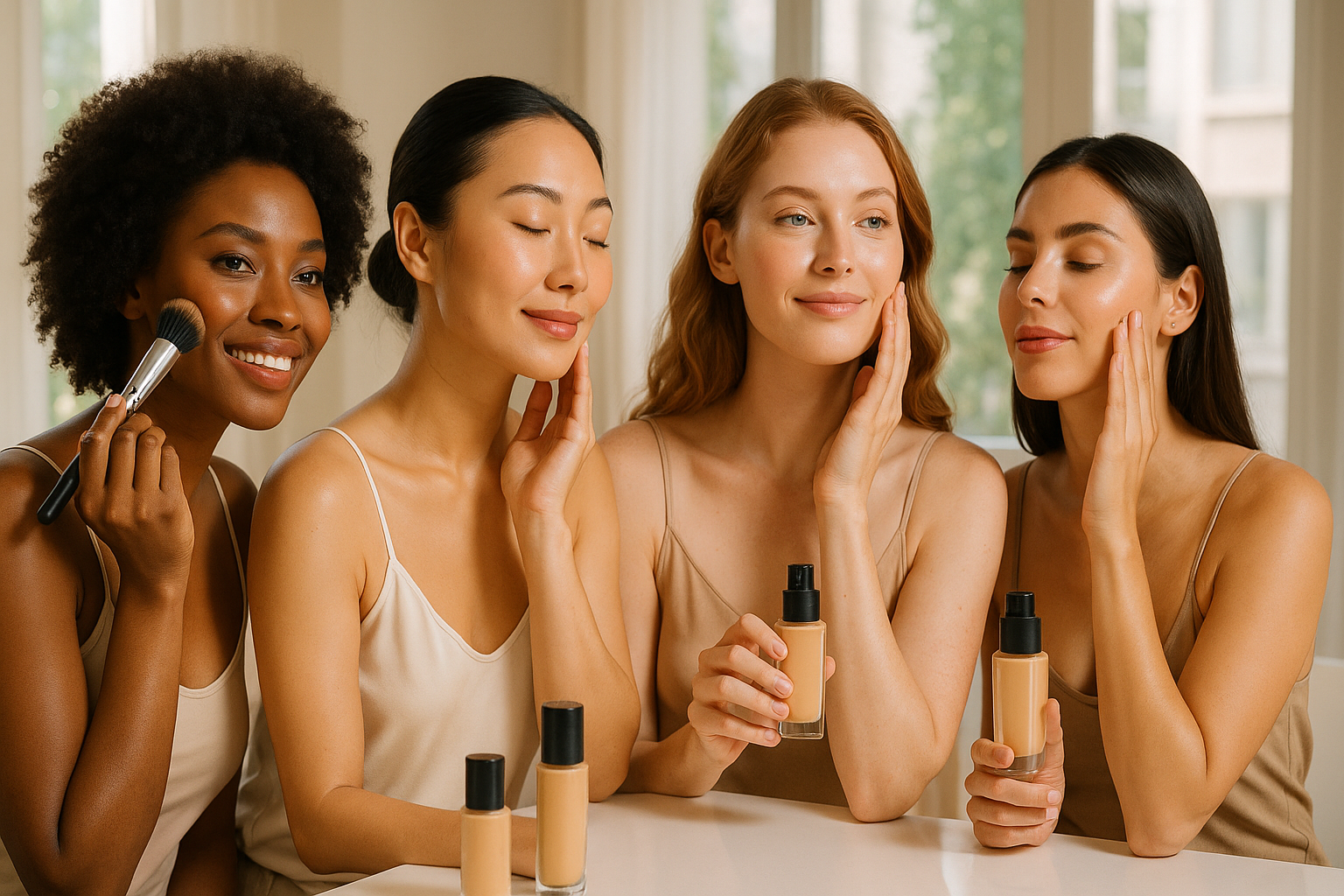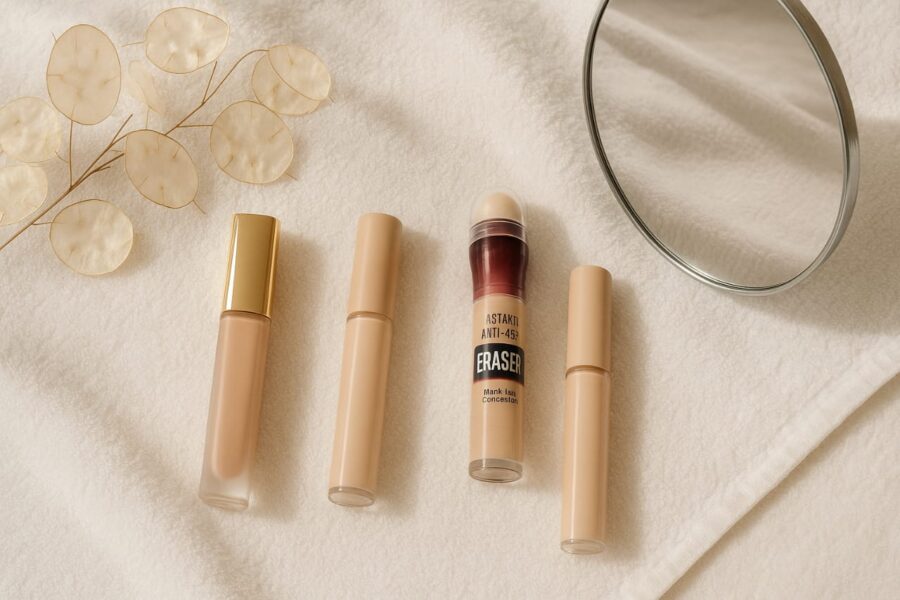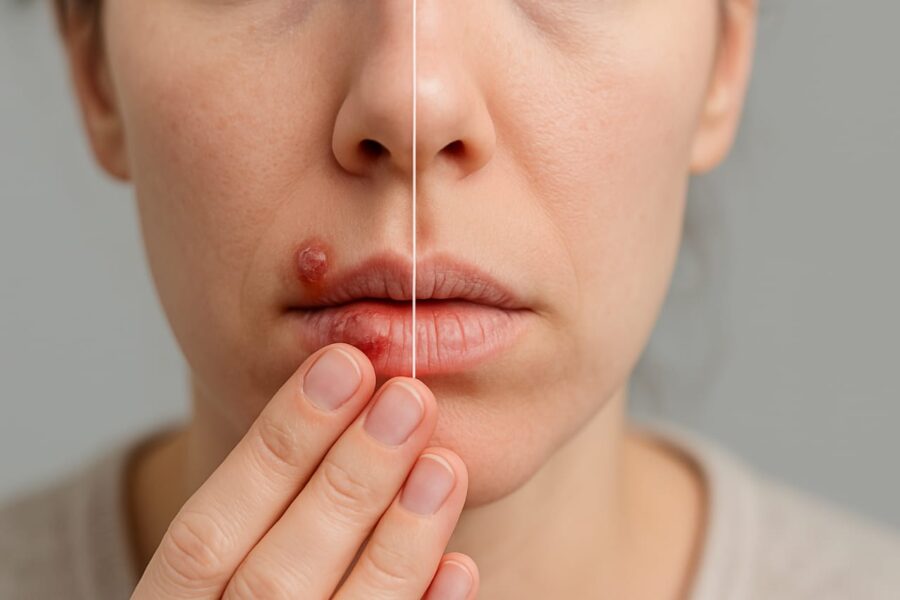The Struggle of Makeup on Dry Skin
Ever applied foundation only to end up looking flaky instead of flawless? Yep, the struggle is way too real. One minute, you’re applying that creamy formula, hoping for a fresh look. Then, your skin feels tight and cracked, looking even drier than before. Your foundation clings to dry patches. It won’t blend, no matter how much you prep. And if your skin is sensitive, too? That’s a whole new level of frustration.
That’s why finding the best foundation for dry skin isn’t a want; it’s a need. When your skin needs hydration, comfort, and a natural look, this product delivers.
In this guide, we’ll explore the best foundations for dry skin in 2025. We’ll cover both budget-friendly options and high-end splurges. For daily flakiness or long-lasting makeup, we have the right products and expert tips. Your dry skin will love our formulas.
Why is my skin so dry even when I moisturize?
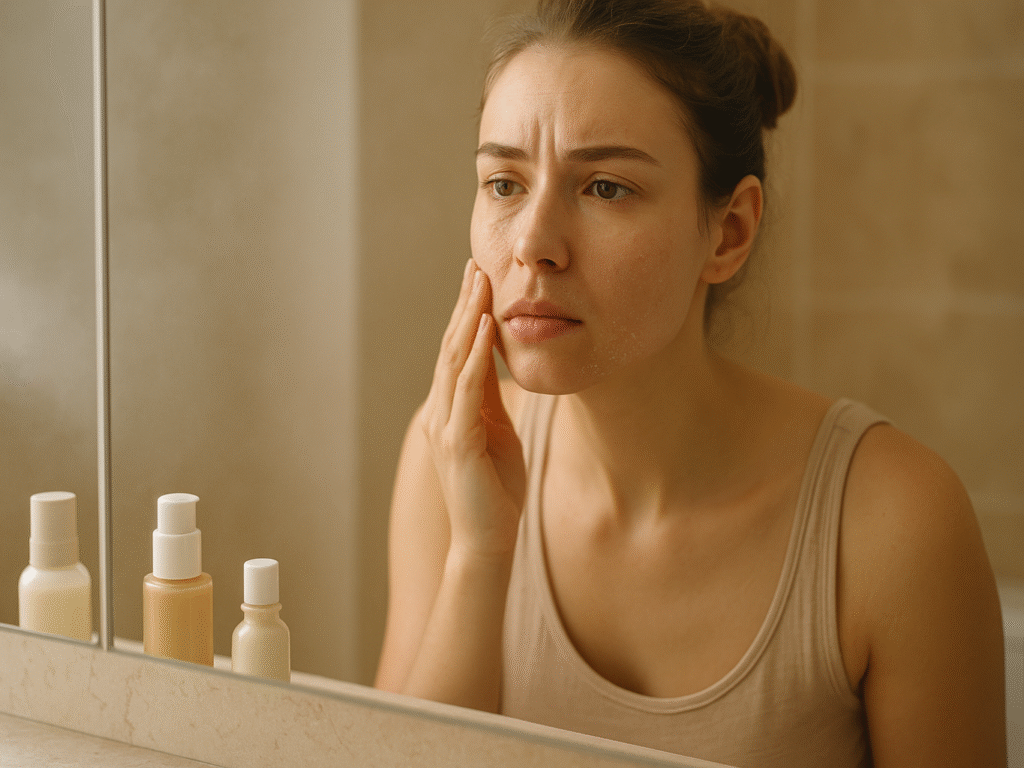
You apply moisturizer every morning. Sometimes at night, too. And yet… your skin still feels dry, tight, and flaky. You’re not alone. Many people ask the same thing: “Why is my skin so dry even when I moisturize?”
The truth is, dry skin needs more than just any moisturizer. It needs the proper routine and the right ingredients to stay soft and healthy. Here’s what might be going wrong:
1. You might be using the wrong kind of moisturizer.
Not all moisturizers work the same way. Some may feel smooth at first, but fail to treat deeper dryness. For real results, choose products that hydrate beneath the surface, nourish the skin barrier, and lock in moisture. That’s how you get soft, healthy skin that lasts beyond the first hour.
- Humectants (like hyaluronic acid and glycerin) attract water into your skin. That sounds good! But if the air is dry, it will pull moisture from deeper skin layers, making things worse.
- Emollients like squalane, fatty acids, and cholesterol fill gaps between skin cells. They also smooth out rough areas. However, they cannot fully prevent water loss by themselves.
- Occlusives, such as shea butter, petrolatum, and dimethicone, form a seal on your skin. This helps keep water locked in. This step is crucial if you live in a dry or cold climate.
Choose moisturizers that combine all three types: humectants, emollients, and occlusives. Apply to damp skin to lock in moisture, and seal with an occlusive if necessary to prevent water loss, ensuring your skin stays hydrated and nourished throughout the day.
2. Your cleanser could be damaging your skin barrier.
Even with the perfect moisturizer, your face wash could be sabotaging your efforts. Harsh cleansers can strip your skin’s natural oils, leaving it vulnerable to dryness and irritation. Choose gentle, hydrating cleansers to preserve your skin’s barrier and keep moisture locked in for longer-lasting hydration.
- Cleansers that have a high ph level, particularly foaming types, can remove the skin’s essential natural oils, leading to dryness and potential irritation over time if used regularly.
- Ingredients like alcohol, artificial fragrances, and sulfates can harm the outer layer of your skin, resulting in increased dryness and irritation that can affect overall skin health and comfort.
- When the protective barrier of your skin becomes compromised, it loses moisture more rapidly than you can replenish, making it increasingly challenging to maintain proper hydration and balance.
Use a gentle, sulfate-free cleanser that’s enriched with soothing ingredients like oat extract, aloe vera, or ceramides. These help maintain and strengthen your skin’s barrier, preventing moisture loss and ensuring your skin stays hydrated and protected throughout the day.
3. You’re missing the moisture window.
It’s simple but important: If you wait too long to moisturize after washing your face, you lose hydration quickly. Once the water evaporates from your skin, dryness starts to set in. Apply your moisturizer within 30 to 60 seconds to prevent moisture from escaping.
- As soon as water evaporates from freshly cleansed skin, dryness increases rapidly. This happens because your skin no longer has the moisture it needs to stay hydrated. To avoid this, don’t delay your moisturizer application. Apply it right after cleansing to lock in hydration before it evaporates.
- Applying moisturizer while your skin is still slightly damp helps trap water and lock in hydration. This is crucial for preventing dryness and ensuring your skin stays soft and smooth. Make it a habit to moisturize immediately after cleansing to get the most out of your skincare routine.
Moisturize within 30 to 60 seconds after cleansing. This is the optimal time window to lock in moisture before it evaporates from your skin. Don’t let your skin dry out in between steps; this simple practice can significantly improve your hydration and help keep your skin soft and supple.
4. Environmental conditions are working against you.
Sometimes, the issue isn’t your skincare products; it’s your environment. Indoor heating or air conditioning dries out the air, drawing moisture from your skin day and night, leaving it dehydrated and prone to irritation.
- Long, hot showers may feel good, but strip your skin of its natural oils, weakening your barrier. This leaves skin more vulnerable to dryness and irritation. Opt for warm showers instead of hot ones to preserve your skin’s moisture and natural oils.
- Overusing exfoliants, retinol, or acids can weaken your skin barrier. When your skin barrier is compromised, moisture escapes, leaving your skin dry, irritated, and more susceptible to environmental stress. Limit these products to once or twice a week for balanced skin health.
To combat dry air, use a humidifier, particularly at night. Adding moisture to the air helps prevent your skin from losing hydration while you sleep. This simple step can make a noticeable difference in how hydrated your skin feels throughout the day.
5. The Wrong Foundation Can Ruin Your Hard Work
Even with well-prepped skin, matte or heavy foundations can make you appear patchy or dry. These formulas cling to dry patches, highlighting texture and creating an uneven finish. They may also cause irritation or redness, especially on sensitive skin, leaving you with a less-than-flawless appearance.
- Many “long-lasting” or “oil-free” foundations tend to cling to dry patches, making them more noticeable and emphasizing skin texture. These formulas can leave your skin looking patchy and uneven, which is especially problematic for dry skin.
- If your skin is sensitive, these foundations can cause irritation or redness. Their ingredients may disrupt your skin’s barrier, leading to discomfort or inflammation. Choosing gentler formulas is key to avoiding these issues and achieving a smooth finish.
Switch to a hydrating foundation for dry skin. Look for labels with words like “glow,” “moisturizing,” or “dewy.” Foundations with ingredients like hyaluronic acid, niacinamide, or squalane provide deep hydration, improve texture, and offer a smooth, radiant finish without emphasizing dryness or irritation.
Before You Apply Makeup, Prep Properly

Here’s a simple and effective skin prep routine before applying foundation: Start with a mild, hydrating cleanser to remove impurities without stripping moisture. Follow with a hydrating serum, then apply a rich moisturizer to lock in hydration. Let the moisturizer absorb fully, ensuring a smooth, hydrated base for flawless makeup.
1. Cleanse
Use a mild, hydrating cleanser to cleanse your skin without stripping away its natural moisture. This sets a fresh base for the rest of your skincare.
2. Pat Dry
After cleansing, gently pat your skin dry, leaving it slightly damp. This helps subsequent products absorb more effectively, maximizing hydration.
3. Serum
Apply a serum rich in humectants, such as hyaluronic acid. This helps draw moisture into your skin, providing deep hydration and improving the overall look of your complexion.
4. Moisturize
Follow up with a rich moisturizer containing emollients and occlusives. These ingredients help lock in moisture and nourish the skin, leaving it soft and smooth.
5. Absorb
Let your moisturizer absorb fully into your skin, about 5 to 10 minutes, before applying makeup. This ensures a hydrated, smooth base for foundation.
Now your skin is ready. Ready for a foundation that won’t crack, cake, or cling to the flakes. Keep reading for our expert picks for the best foundation for dry skin in 2025, tested, loved, and made for your skin type.
What to Look for in the Best Foundation for Dry Skin

To find the best foundation for dry skin, choose ones with hydrating ingredients. Look for hyaluronic acid, glycerin, and squalane. These ingredients trap moisture. They keep your skin smooth, hydrated, and glowing all day. Plus, they won’t cling to dry patches or flakes.
1. Hydrating Ingredients for Dry Skin
Choose a hydrating foundation for dry skin. Look for ingredients like hyaluronic acid and glycerin. These humectants attract moisture to your skin, helping it stay hydrated for longer. They provide deep nourishment. This keeps your foundation smooth and fresh all day without highlighting dryness.
Squalane is another key ingredient in foundations designed for dry skin. It acts as an emollient, providing moisture and softening the skin’s surface. A hydrating foundation with squalane is perfect for dry skin. It helps restore moisture balance. This leaves a smooth and supple base for applying makeup.
2. Creamy texture for a smooth finish
A creamy texture in foundations works wonders for dry skin. Hydrating foundations have a creamy finish. They blend well and stop dryness from settling into fine lines. This foundation gives a dewy, glowing look. It boosts your skin’s natural shine and keeps it hydrated.
If you’re looking for a flawless finish, opt for a hydrating foundation with a dewy texture. This provides a glowing, fresh look, ideal for dry skin. A hydrating foundation for dry skin gives a dewy finish. It helps your complexion look healthy and youthful. Plus, it won’t highlight patches or rough spots.
3. Avoid matte foundation and powder formulas
Matte foundations can dry out the skin and highlight texture. This often makes dry skin look patchy. These formulas tend to absorb moisture and can worsen dryness. Choose a hydrating foundation for dry skin. It should give you a moisturizing and natural look for the best results.
Powder foundations can exacerbate dryness by clinging to flaky areas and uneven textures. To prevent this, choose foundations designed for dry skin that provide more moisture. Hydrating foundations give you a smooth and even look. They don’t highlight dry areas or irritate. This way, you stay comfortable all day.
4. Buildable Coverage for Dry Skin
Hydrating foundations provide buildable coverage. This helps you achieve a flawless look without drying out your skin. Choose a foundation that offers light to medium coverage and keeps your skin hydrated. This ensures that your foundation remains smooth and natural throughout the day.
A lightweight formula is essential for dry skin. Heavy foundations can settle into dry areas and make your complexion appear cakey. Hydrating foundations are lightweight, so they allow you to build coverage easily. This makes them great for dry or sensitive skin.
Best Foundation for Dry Skin: Top 3 Picks by Budget
To choose the best foundation for dry skin, look for one that hydrates. It should also give a smooth finish and not cling to dry patches. Here are the top three foundations by budget. Each one meets different needs and preferences.
1. Budget Option: Maybelline Fit Me Dewy and Smooth Foundation
- Price: ~$8
- Key Ingredients: Glycerin, SPF 18
- Ideal for: Daily wear, light to medium coverage
- Amazon Rating: ⭐⭐⭐⭐
Why it’s great for dry skin:
- Hydrating formula: Glycerin pulls moisture into the skin, providing hydration throughout the day. This makes it a great choice for those dealing with dry skin that feels tight or flaky.
- SPF 18: Shields the skin from UV damage. It helps to stop dryness from sun exposure.
- Light-to-medium coverage: This foundation balances skin tone well. It feels light, not heavy. This is important for dry skin.
Use: A damp sponge for the best, most seamless application. This technique keeps the foundation from settling in dry areas. It gives your skin a smooth, dewy finish.
2. Mid-Range Option: L’Oréal Paris True Match Lumi Healthy Luminous Makeup
- Price: ~$15–$18
- Key Ingredients: Vitamin C, Antioxidants
- Ideal for: Hydrating foundation for dry skin and dry-sensitive skin.
- Amazon Rating: ⭐⭐⭐⭐
Why it’s great for dry skin:
- Radiant finish: This lightweight formula offers a luminous glow without the grease. It is ideal for dry skin needing moisture and a touch of radiance.
- Hydrating benefits: Vitamin C and antioxidants protect and nourish the skin. They keep it hydrated, so you need less moisturizer before applying foundation.
- Great for dry and sensitive skin: This foundation is perfect for those who have skin that easily gets irritated or red. It provides a dewy, healthy-looking finish without aggravating skin issues.
Perfect for: Those with dry, sensitive skin who need both hydration and a glowing finish.
3. Premium Option: NARS Light-Reflecting Foundation
- Price: ~$50
- Key Ingredients: Light-reflecting complex, vegan
- Ideal for: The best foundation for dry sensitive skin.
- Amazon Rating: ⭐⭐⭐⭐⭐
Why it’s great for dry skin:
- Skincare-infused formula: This foundation has a light-reflecting complex that blurs flaws and smooths skin. It also hydrates and offers anti-ageing benefits.
- Lightweight, serum-like feel: This foundation is weightless. It wears like a second skin, unlike heavier options. It helps reduce the appearance of dry patches and keeps your skin looking fresh.
- Blurry texture: This foundation smooths rough spots and fine lines. It’s ideal for dry skin that tends to be flaky or uneven.
Ideal for: Anyone seeking a luxury foundation that hydrates dry skin. It also provides skincare benefits and gives a flawless, glowing finish.
Tips for Choosing the Best Foundation for Dry Skin
- Hydrating Foundation for Dry Skin: To find the best foundation for dry skin, look for hydrating ingredients. Good options include hyaluronic acid, glycerin, and squalane. These help lock in moisture and prevent the foundation from accentuating dry patches.
- Why is my skin so dry even when I moisturize? It could be due to harsh cleansers, heat or AC, or using the wrong moisturizer. It’s essential to hydrate adequately before applying foundation to ensure a smooth, long-lasting finish.
- For dry, sensitive skin: Choose a foundation without irritating ingredients. Look for options free from alcohol and fragrances. Foundations with added vitamins, antioxidants, or calming agents will help soothe your skin while keeping it moisturized.
These options and tips will guide you in finding the perfect foundation for your dry skin. No matter if you want an affordable, mid-range, or premium choice, each product offers hydration and a smooth, radiant finish.
Application Tips: How to Make Foundation Work on Dry Skin
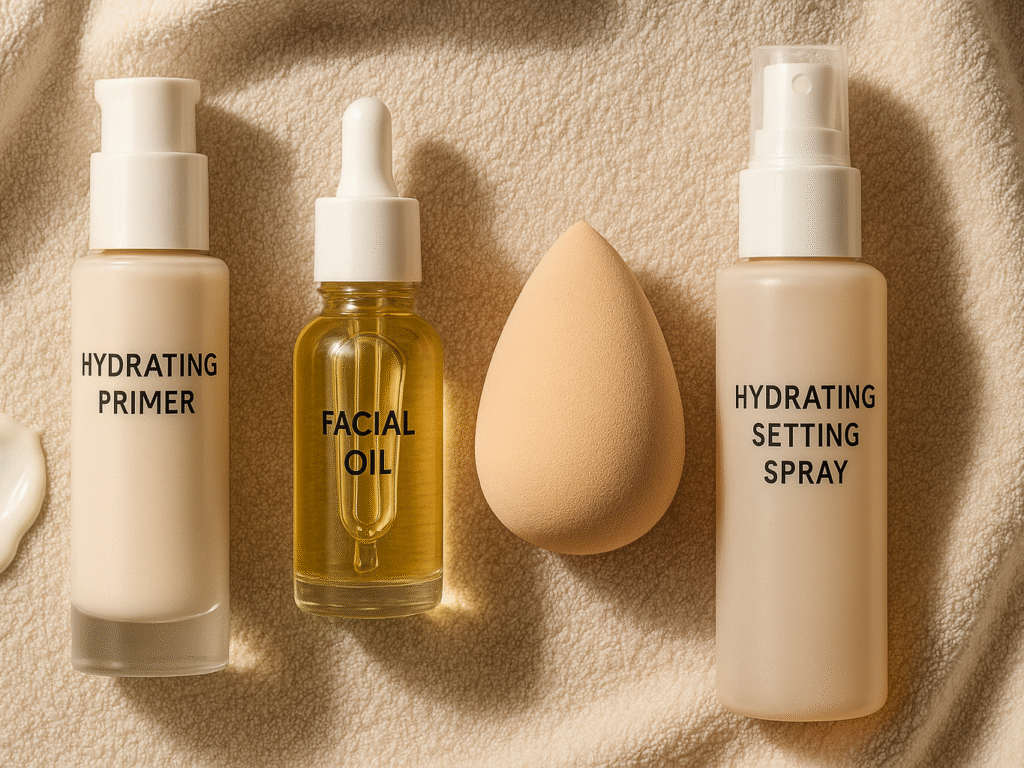
To apply foundation on dry skin, use the right products and techniques. This helps prevent cakiness, patchiness, and irritation. To get a smooth, even finish, use hydrating primers and damp beauty blenders. Also, avoid powders. Follow these tips to make the best foundation for dry skin work effectively for you.
1. Start with a hydrating primer or facial oil.
To keep your skin moisturized all day, begin with a hydrating primer or facial oil. These products give you a smooth, nourished base. This helps your foundation go on easily. A hydrating foundation for dry skin must have a base that locks in moisture. This way, your skin stays plump and hydrated.
Choose primers that have glycerin or hyaluronic acid. These ingredients help add moisture. Applying a light layer of facial oil can provide an extra dose of moisture, especially for dehydrated skin.
2. Use a damp beauty blender, not brushes.
Brushes can lift dry skin flakes and create patchiness, leaving your best foundation for dry skin looking uneven. Instead, use a damp beauty blender. The sponge adds moisture, which helps press the foundation into your skin. This ensures an even application and keeps it from sticking to dry patches.
Dampen your beauty blender with a hydrating mist or setting spray. This helps blend the product. It also makes your hydrating foundation for dry skin last longer and prevents it from drying out.
3. Avoid powder unless it’s necessary.
Powder can be extremely drying for the skin, making it an enemy of dry and sensitive skin. If you’re using the best foundation for dry sensitive skin, try to avoid powder altogether. If you must set your foundation, use a light touch and focus only on areas that tend to get oily, like the T-zone.
Choose a translucent powder and apply it sparingly with a fluffy brush. Avoid matte powders, as they can make dry skin look even more parched.
4. Set with Hydrating Spray, not Matte Setting Spray.
Matte setting sprays can take moisture from your skin. This isn’t great when you’re using the best foundation for dry skin. Instead, opt for a hydrating setting spray that locks in moisture and gives your skin a fresh, dewy finish. These sprays keep your skin looking hydrated all day. They are great, especially with a hydrating foundation for dry skin.
Choose setting sprays with aloe vera or hyaluronic acid. They add hydration. These sprays make your makeup feel good. They help it last longer and keep your skin from drying out.
These tips will help your foundation for dry, sensitive skin look flawless. It will also make you feel comfortable and stay hydrated all day. The right mix of products and methods can give you a smooth, glowing complexion. It won’t highlight any dry patches.
Real Talk: Should You Fix Your Skin or Buy a Better Foundation?

Short answer: Do both.
A hydrating foundation for dry skin can work wonders, but it’s only part of the solution. The key to achieving flawless makeup starts with healthy, nourished skin. When your skin is well-prepped and hydrated, the best foundation looks and lasts better.
Here’s how to take care of your skin to make foundation work even harder for you:
1. Gentle exfoliators
(like PHA or lactic acid) They are a game changer. These acids slough off dead skin cells without irritating your sensitive skin. They smooth rough patches. This way, your favourite foundation for dry skin glides on evenly and won’t settle into dry spots.
2. Sleeping masks
They are fantastic for an overnight boost of moisture. They deliver deep hydration and lock it in while you sleep, ensuring you wake up with plump, smooth skin. This makes foundation application much more effective by providing a hydrated base.
3. Drinking water
It won’t cure everything, but it helps keep your skin hydrated. Water supports your skin’s barrier. This helps prevent dryness and irritation.
In short, excellent skin care combined with the best foundation for dry sensitive skin creates a flawless, natural finish. Healthy skin is the secret to making your makeup look even better.
Conclusion: Flawless skin starts with the right foundation (and prep).
Choosing the best foundation for dry skin is essential for achieving a flawless complexion, but prep is just as important. Choosing between budget-friendly foundations like Maybelline Fit Me Dewy + Smooth and premium ones like NARS Light Reflecting Foundation can be key. The proper foundation truly makes a difference.
Remember, there’s no one-size-fits-all solution, but hydration is always key. A hydrating foundation with a good skincare routine will keep your skin radiant and comfortable all day.
Don’t forget: healthy, nourished skin is the secret to making your foundation work even better. With the right combination of skincare and makeup, your dry skin will have the glow it deserves.
Try one of these foundation picks today and give your dry skin the glow it deserves.

